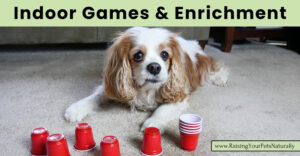Google Adsense—>

How to Teach Your Dog to Be Calm on A Leash
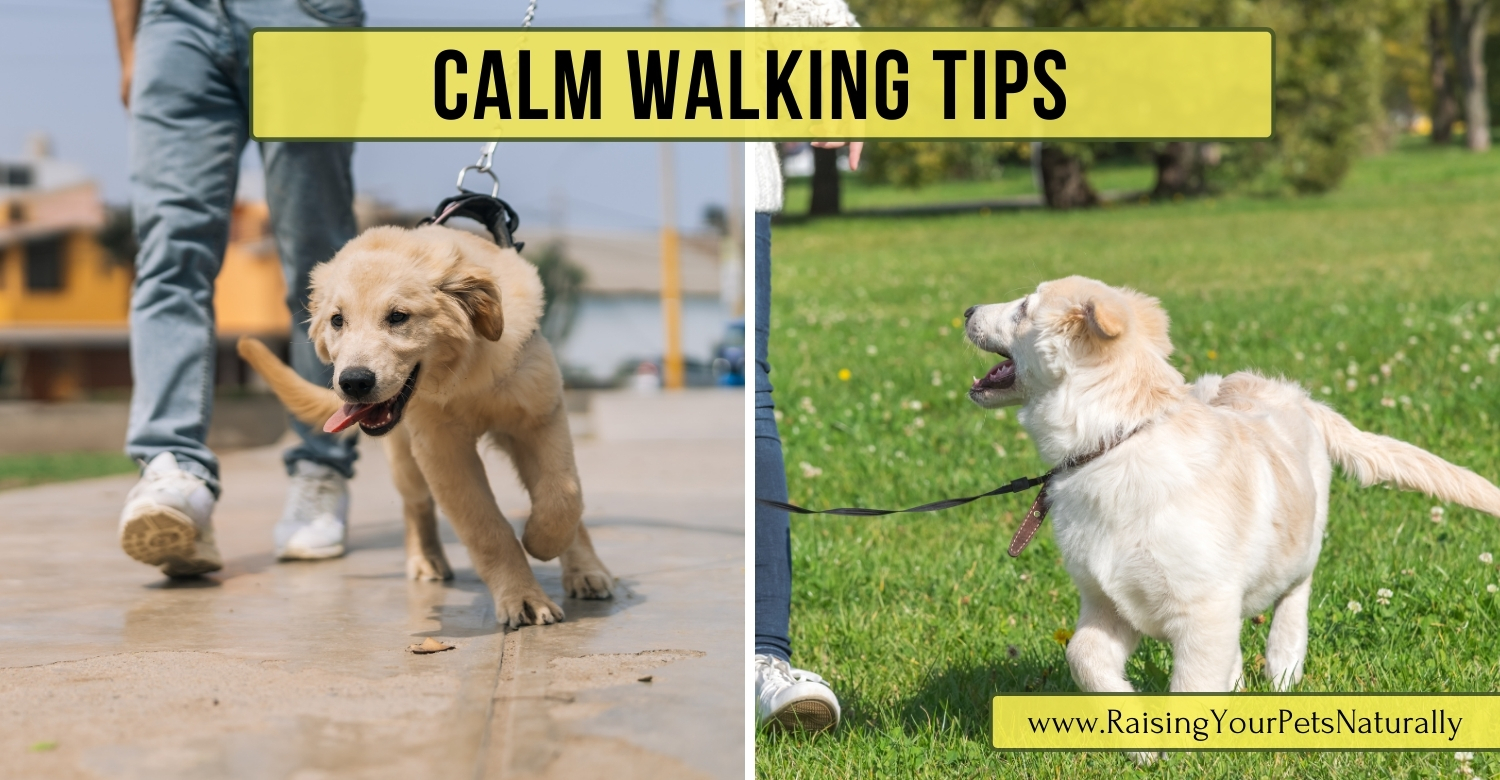
Does your dog seem to get a little too excited during his walks? If so, this positive dog training blog is for you! Today, I’m going to talk about how to help your dog settle down during his walks. In this blog, I’ll go over practical tips and tricks to stop your dog from pulling on the leash, how to manage dog reactivity on walks, and how to teach good leash manners for dogs.
Addressing Dog Behavioral Concerns
First things first: make sure you’re addressing your dog’s behavioral concerns. If these involve people, other dogs, or other anxieties, you will want to make sure you are working on a positive behavior modification program for those. I have quite a few videos and blog posts on those topics.
Impulse Control Games
One of the keys to managing an overexcited dog on walks is teaching them impulse control. There are plenty of simple, everyday things you can do to help your dog learn self-control and find a good way to channel all that energy. For instance, my video Seven Things Every Dog Should Be Getting Each Day is a great place to start. It’s packed with essential tips to meet your dog’s physical and emotional needs, which can be very helpful for those with out-of-control walking issues.
Subscribe to @RaisingYourPetsNaturaly for more!
Check out my video on over-arousal where I demonstrate different games that help your dog learn self-control. In this video, I demonstrate with dogs in training how to not jump for food, toys, wait patiently, leave it, not dashing out the door, and more. Practicing these games can make those overstimulating walks much less challenging.
Pre-Walk Exercise
If your dog is overexcited on walks, start by burning off some energy at home. Before snapping on that leash, engage in a bit of play or a run around the yard. This could be a 15 to 30-minute session of chasing a toy, depending on your dog’s physical ability and age. This pre-walk exercise can help your dog settle down before heading out. Your pre-walk exercise can also be positive training or even a mental canine enrichment game.
Choosing the Right Gear
When it comes to gear, I promote using a harness instead of a collar. A harness with a clip on the front can give you more control and help prevent your dog from pulling on the leash. A six-foot leash is typically ideal for positive training exercises, but avoid extendable leashes as they can teach your dog to pull, not to mention they are an extreme safety hazard.
Calm Leash and Harness Attachment
Attaching the leash to a calm dog might take some time initially, but it’s crucial. If your dog starts bouncing around when you pull out the dog harness, just stand still and wait for him to calm down. When he does, slowly bend down to put on his harness. If he jumps around when you go to put on the harness, stand back up. Ignore your dog, wait again for him to be calm, then repeat the process. Yes, you are likely going to get a nice workout during the initial training process. This process might take your entire walking time at first, but it’s worth it for teaching your dog patience and calmness.
If you need to jumpstart the process, you can use food as a lure and reward. But you still want to make sure your dog is calm. And when I say calm, I don’t mean he has to be a statue, just calm enough where you can attach and go.
Desensitizing the Harness, Leash, and Door Handle
Practice desensitizing your dog to the harness and leash. If your dog goes bonkers when the harness and leash come out, put on his harness and leash multiple times a day without going outside. This helps reduce the excitement associated with the gear. Once your dog is calm with the leash on, practice the same calm behavior with the door handle.
Desensitizing your dog to the door handle is very helpful in creating a calm walking experience. Once your dog is attached to the harness and leash and remains calm, the next trigger is often the door handle. Begin by mimicking the action of opening the door without actually doing so. If your dog remains calm, offer a healthy dog treat or verbal praise. If he becomes excited, stop and wait for him to settle down before trying again. Gradually increase the motion of turning the handle, ensuring your dog stays relaxed. The goal is to break the association between the door handle and the immediate excitement of going outside. By consistently practicing this, your dog will learn that the door opening isn’t a big deal.
Subscribe to @RaisingYourPetsNaturally for more tips!
Starting the Walk
When you finally step outside, don’t focus on distance. Start close to home and allow your dog to sniff and explore. Use the cue “sniffy sniff” to give your dog permission to investigate. This helps your dog soak up the environment and unwind, using his all-important sniffer.
Training Walks
On your walk, engage your dog with cues he knows, like sit, down, nose targets, or spin. This helps keep his focus on you and makes the walk more interactive. Reward good behavior with high-value treats, like cooked or freeze-dried meat, which is usually more enticing than dry biscuits. However, during the walk, give your dog mental breaks with your “sniffy sniff” cue.
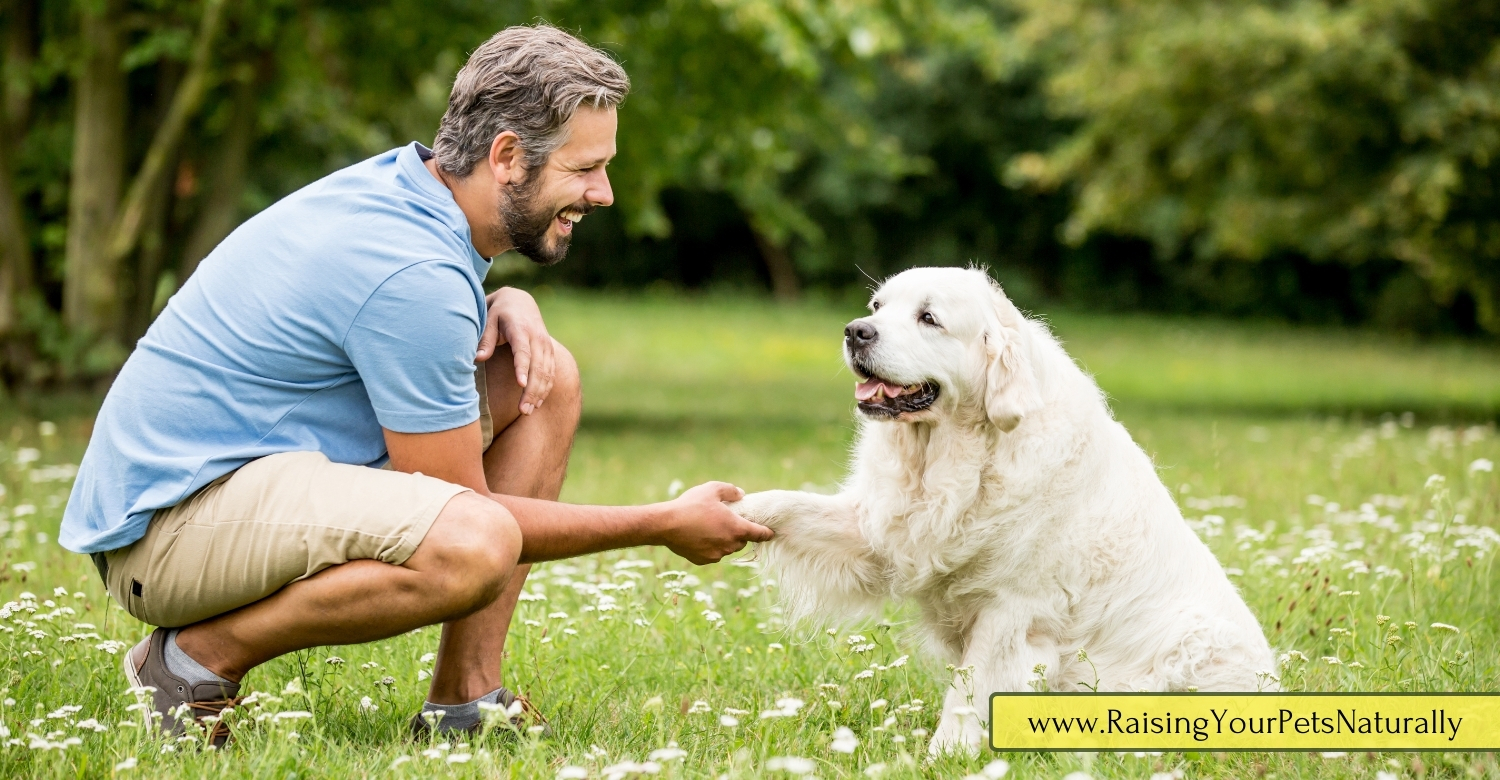
Managing Distractions
Pay attention to the environment for distractions like other dogs, squirrels, or bikes. Work on getting your dog’s attention before he gets out of control. For example, if a bike is ten houses away and your dog usually reacts at five houses, start rewarding him at ten houses to slowly desensitize him to that trigger. Then change directions to ensure that the bike is always at a distance where your dog can be successful. You want success through training, not failure.
Patience and Consistency
Remember, training takes time, especially if your dog has had these behaviors for a while. Be patient and consistent. If your dog overreacts, increase the distance from the trigger until he calms down. Reward him for calm behavior and slowly decrease the distance over time.
When you brought that bundle of joy home, you probably envisioned nice, fun, long walks. It’s not too late! With patience, practice, and lowered expectations, you’ll be able to enjoy peaceful walks and adventures with your dog. Keep practicing, stay consistent, and soon you’ll have a calmer, more controlled walking companion.
Your questions or comments are welcome below.
Are you looking for even more ways to stay up to date with Raising Your Pets Naturally? Sign up for the newsletter for more tips and promotions. Don’t forget to be social and Like, Follow and Subscribe.
Facebook Twitter Pinterest Instagram YouTube
 |
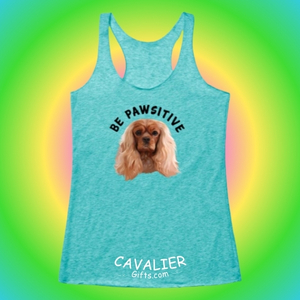 |
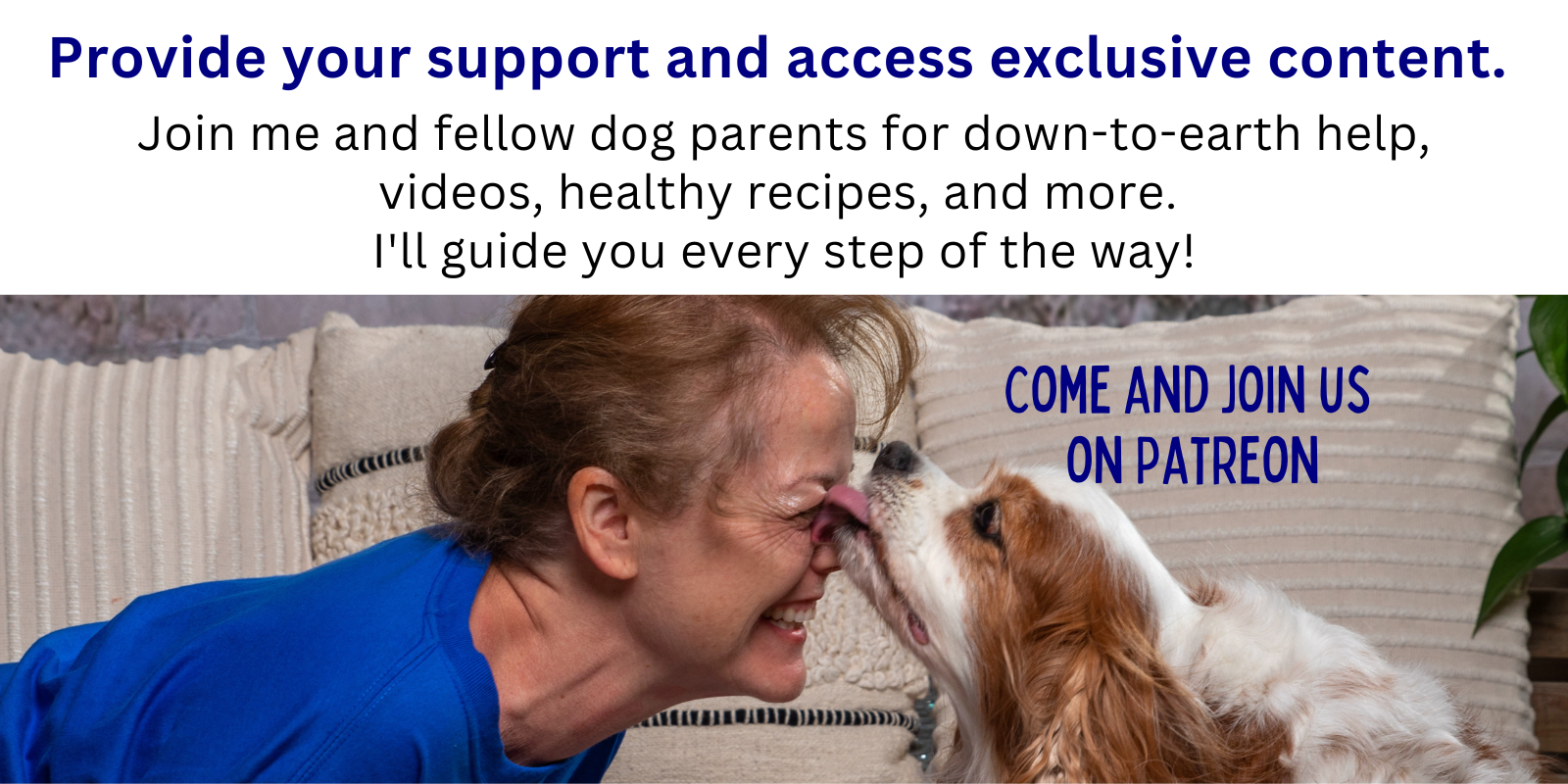
Google Adsense—>




